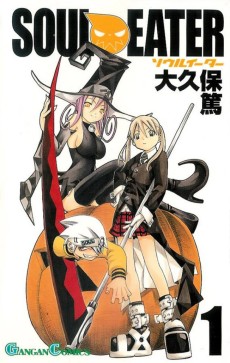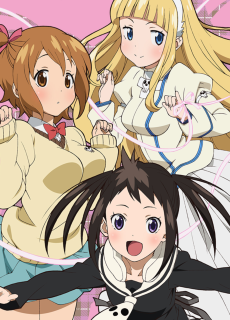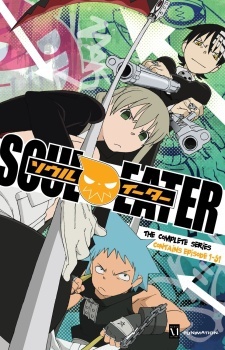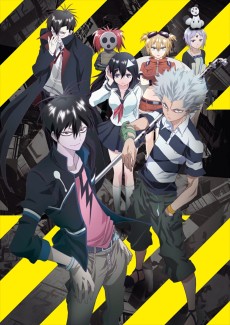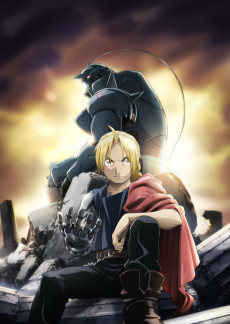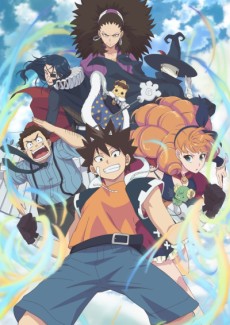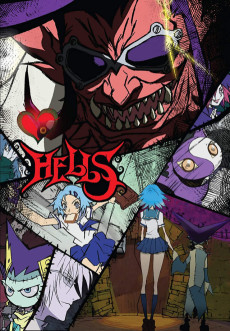SOUL EATER
STATUS
COMPLETE
EPISODES
51
RELEASE
March 30, 2009
LENGTH
24 min
DESCRIPTION
Set in the Shinigami technical school for weapon meisters, the series revolves around 3 groups of each a weapon meister and a human weapon. Trying to make the latter a "Death Scythe" which is the highest title for a weapon and thus fit for use by the Shinigami, they must collect the souls of 99 evil humans and 1 witch.
Maka & Soul Eater, Black Star & Tsubaki, and Death the Kid with Patty and Liz Thompson are the characters Soul Eater revolves around. Besides taking the time to gather souls, these students of Shibusen defend Death City from some of the most powerful of creatures while still attending school and trying to become stronger.
CAST
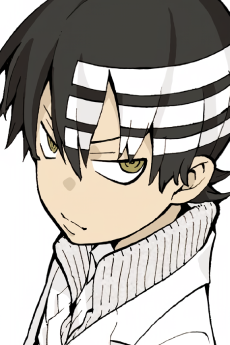
Death the Kid
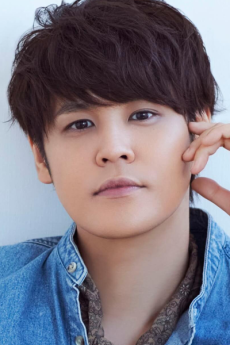
Mamoru Miyano
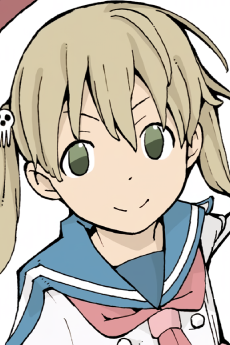
Maka Albarn
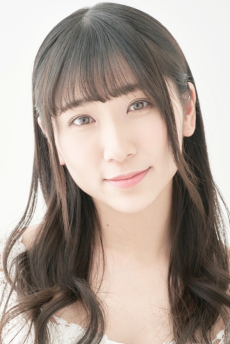
Chiaki Omigawa
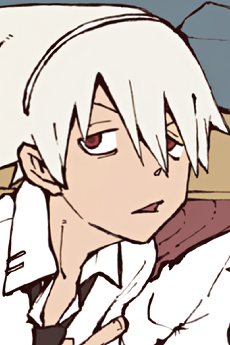
Soul Eater Evans
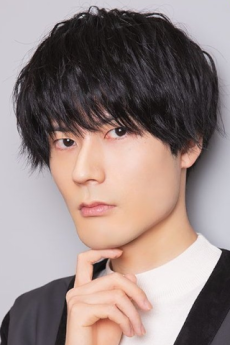
Kouki Uchiyama
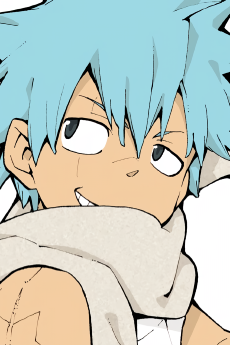
Black☆Star
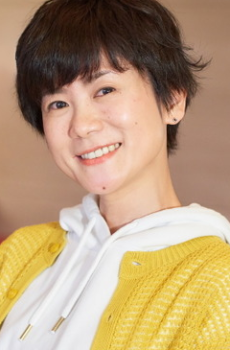
Yumiko Kobayashi
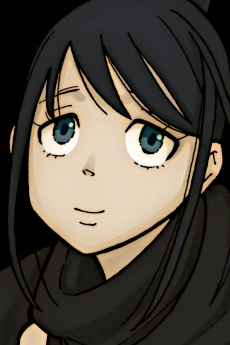
Tsubaki Nakatsukasa
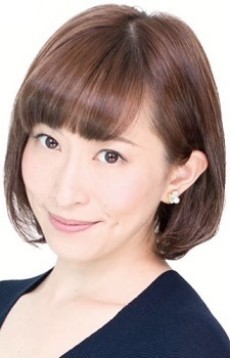
Kaori Nazuka

Patricia Thompson

Narumi Takahira
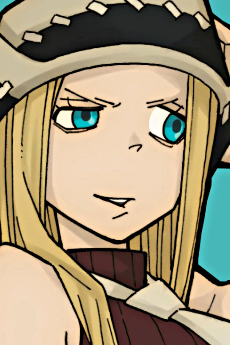
Elizabeth Thompson

Akeno Watanabe
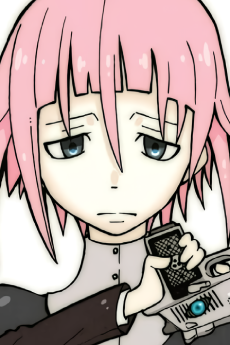
Crona
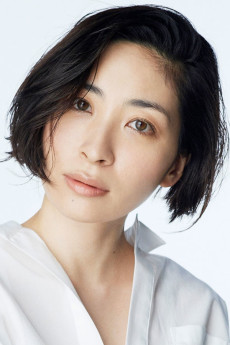
Maaya Sakamoto
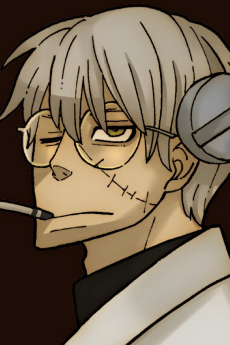
Franken Stein

Tomoe Hanba
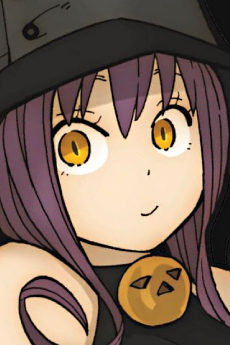
Blair
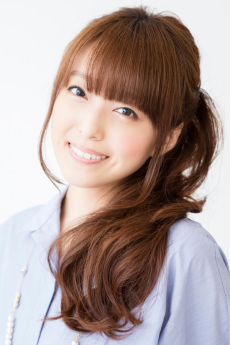
Emiri Katou
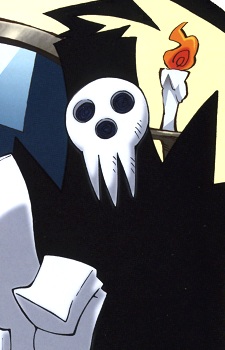
Shinigami

Rikiya Koyama

Excalibur
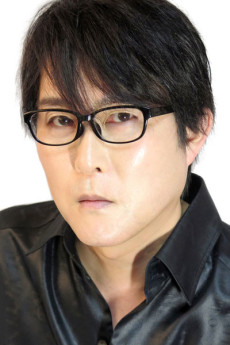
Takehito Koyasu
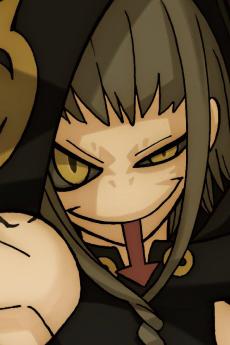
Medusa Gorgon
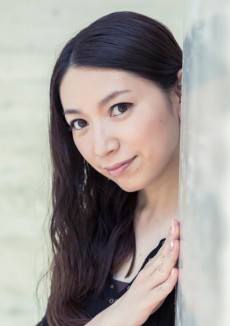
Houko Kuwashima

Spirit Albarn
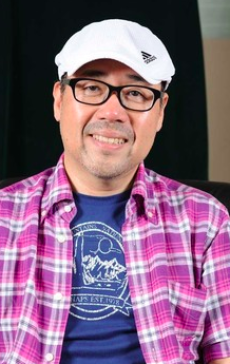
Tooru Ookawa
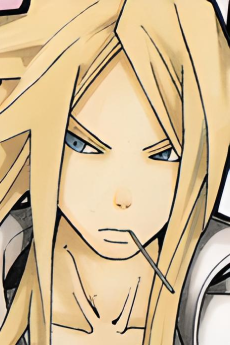
Mifune
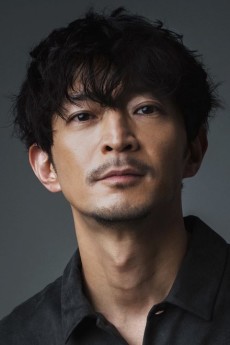
Kenjirou Tsuda
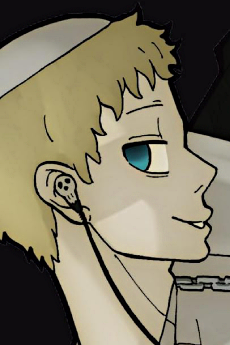
Justin Law

Keisuke Oda
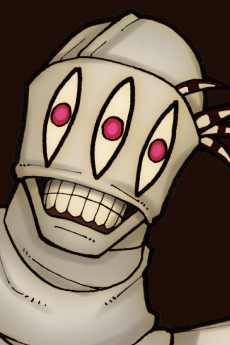
Asura
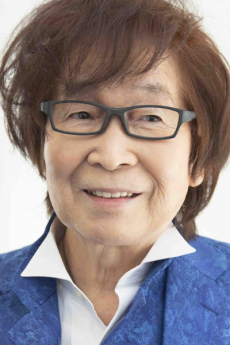
Toshio Furukawa
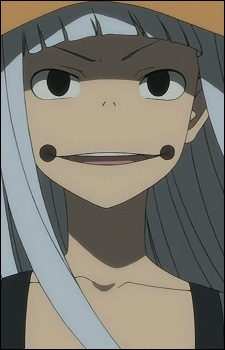
Eruka Frog
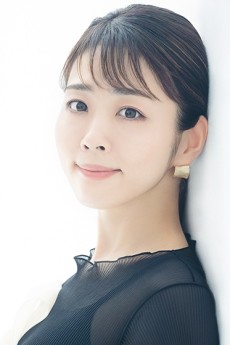
Misato Fukuen
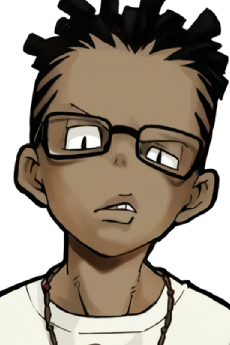
Kilik Rung
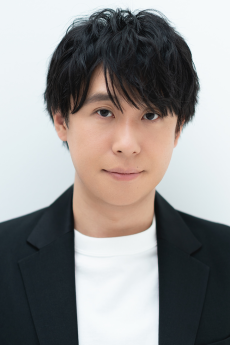
Kenichi Suzumura
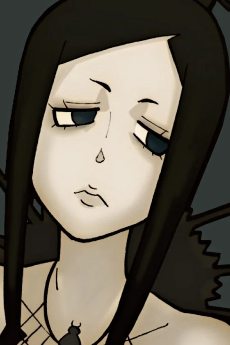
Arachne Gorgon
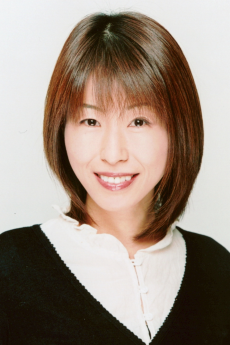
Michiko Neya
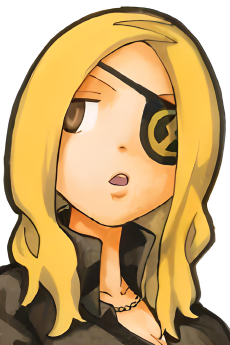
Marie Mjolnir
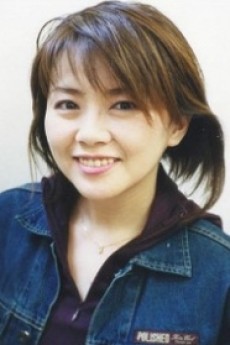
Chieko Honda

Ragnarök
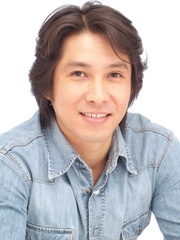
Keiji Himeno
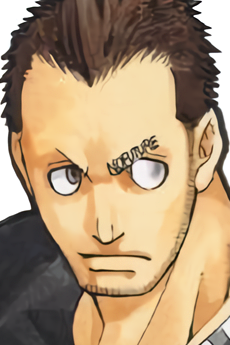
Free
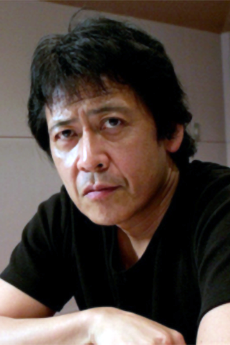
Rintarou Nishi

Mira Nygus
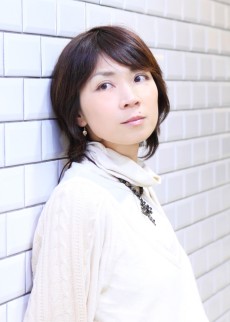
Junko Noda
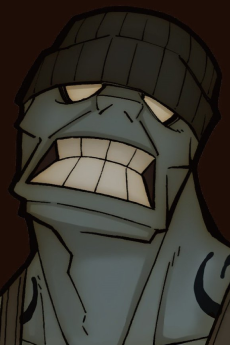
Sid Barrett
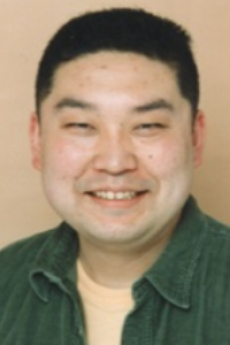
Masafumi Kimura
EPISODES
Dubbed
RELATED TO SOUL EATER
REVIEWS

TheRealKyuubey
60/100It really doesn't have a sound mind or a sound body.Continue on AniListIf you’re a fan of the nineties stop motion movie The Nightmare Before Christmas, your vision of a land based entirely on the tropes, designs and conventions of Halloween is a dark, depressing town where every single resident is ironically joyful and pleasant towards one another. Soul Eater, on the other hand, takes this idea and turns it over on it’s head. Death City, for all of it’s creeps and ghouls, is a bright, happy place where even the Grim Reaper is more of a cuddly uncle than a terrifying specter of doom. The Reaper, or Lord Death, as he prefers to be called, is the headmaster of the Death Weapon Meister Academy, a school that teaches young people how to join their souls to protect the world from witches!
To do this, one student must become a living weapon, and their chosen partner must wield them against creepy, devious witches who hide in the shadows and… Do stuff, like transforming into all manners of creepy creatures! Once each team has devoured the souls of 99 corrupted humans and one witch, they will be advanced to the status of Death Scythe, the preferred weapons of Grim Reapers everywhere. But one witch has decided to take matters into her own hands… She plans to awaken an ancient, sleeping demon that will drive the entire world past the brink of insanity! Can Meister Maka, her weapon Soul, and their friends stop this plan before it’s too late, or will the world lose itself to the clutches of chaos?
The animation studio behind this heaping helping of Halloween was Studio Bones, the studio that gained fame from Fullmetal Alchemist and Wolf’s Rain. Like the majority of their projects, Soul Eater has solid, kinetic animation… About half the time. The animation is never quite as smooth or expensive as it is in the first season opening, but it is more or less solid for the most part. There are a few embarrassing moments, such as where characters look like their walk cycles were just copied and pasted onto the environment, but thankfully, they’re few and far between. What’s NOT few and far between are the still shots. There are several occurrences where a character is talking, but the camera is focused on the environment, other character’s faces, or just the eyes of the speaker, leaving the lip flaps off screen.
There are a lot of action and fighting scenes throughout this series, and the fact that most of the budget is saved for those scenes is a life saver in the long run. The editing and angles can be a bit too amateurish and generic for their own good at times, and there are way too many close-ups of characters’ faces, but it works over-all. The character designs are it’s best visual aspect by far, although the highly detailed backgrounds are also noteworthy. There was so much inspiration and creativity in the aesthetic of this series that even the Grim Reaper is like no other reaper you’ve ever seen before.
Aside from a couple of female background characters who are retroactively given names and identities in the later episodes, every single named character is given a unique and unforgettable look that goes beyond just their hairstyles and fashions. Some of them are grounded, some of them are insane, and you can tell instantly which witches are based on which animals. If you haven’t seen the anthropomorphic version of the legendary sword Excalibur… Think Puttin’ On the Ritz from AMV Hell 5… You would never guess what he looks like or acts like in this series, as he has one of the most insane gimmicks in a series full of insane gimmicks.
The music… I think existed? Well, that’s not fair. The music is decent in this series, but for the most part, it does it’s job in the background, rarely ever calling attention to itself… Which is good because trust me, a lot of it’s tracks are reused over and over again through the series. Besides, who cares about the score when you’ve got such amazing opening and closing songs? The first opening is called Soul Resonance by TM Revolution, and it’s the kind of high energy, intense tunes that grabs you the first time you hear it and demands you come back for more, and the animation in the video more than keeps up with it. The second opening is a bit more generic, but it’s serviceable enough. There are four closing themes, and while the first one (I Wanna Be) is probably the best, I still personally prefer the much more mellow second one, Style, as it offers the cool-down that I felt each episode needed. Your opinion on this may differ, which is fine… They’re all great closings, in their own ways.
The English dub was of course a Funimation effort… They’ve been getting dangerously close to Disney levels of ubiquity at this point… And while I’ve heard some people call it average, I think it’s great. I can normally call out a star performer in any dub I review, but in Soul Eater’s case, there are just too many to pick from. Luci Christian rarely ever plays a villain… Elfen Lied being one of the few examples… But she plays the role of Medusa, school nurse/evil mastermind, and she clearly enjoyed every second of it. She sounds downright diabolical and as slithery as the snake she’s based on, even when she exploits her cutesier voices to mock or manipulate people. Troy Baker is unrecognizable as the pretentious nuisance Excalibur, and Vic Mignona excels in the role of an overly-enthusiastic dad who wants nothing more than the forgiveness of his estranged daughter.
Todd Haberkorn brings out both the strength and neurotic tendencies of Lord Death’s son Death the Kid in the ways that only he ever could, Chuck Huber handles Dr. Stein’s insanity brilliantly, and Maxey Whitehead fully embodies the androgynous Crona through all of his/her psychotic, awkward nuances. Brittany Karbowski starts off a little roughly as Blackstar, the hyperactive ninja who makes Naruto look stealthy, and it can be a little difficult to take her seriously in the early episodes, but she hits her groove hard and fast. Laura Bailey and relative newcomer Micah Solusod play the main partnership of Maka and Soul as likeably as they can, although for the majority of the series, their jobs aren’t really as demanding as everyone elses. Pretty much every Funimation actor that was around in the late 2000s is in this at some point, and everyone’s at least on point.
So after speaking so highly of the sound, acting and production values, you’re probably expecting me to remain positive for the rest of the review. you’re expecting me to keep rambling on about how awesome the series is, how well written it is, and how much I love it. Well, much like this series did to me, I’m afraid I’m going to have to disappoint you. The truth is, I don’t think I’ve ever encountered this large of a disparity between writing quality and popularity… Well, not in the anime medium, at any rate. I can think of at least one web cartoon that’s far more popular, despite being even worse.
To begin, let’s take a look at the main characters. One of the easiest ways to pinpoint bad writing is to notice that a character who you’re constantly being told is smarter than the rest of the cast shows no actual signs of enhanced intelligence to back up that claim. In Death Note, we were given no explanation of Light Yagami’s study habits or scholastic strengths, but at least we knew he was good at strategy and manipulating people. In No Game No Life, the two stars made it very clear which of them was skilled in which areas, and we saw their talents unfold during some of the game sequences. In Soul Eater, there is no evidence whatsoever to support Maka being the top student at the Academy. She never uses her intellect during battle, and the only test question we see her answer is the show’s line about sound minds and bodies. The only brainy thing she ever does is dump exposition on the viewer.
All of her accomplishments are due to her bond with Soul, rushing into situations courageously, and coming up with new attacks. We never see her outwit or outsmart anybody… She just resolves conflicts through the application of virtues such as bravery and friendship. But hey, that’s no big deal as long as the title character is interesting, right? Well, sorry, he’s not. Soul Eater, and yes that’s his alarmingly prophetic name, is a laid back cool guy who likes playing the piano… And that’s pretty much it. I learned more about him from a single paragraph on Wikipedia than I did from a 52 episode series that’s specifically named after him. You never learn about his family, his backstory, or why he wants to become a Death Scythe in the first place.
And that just brings up another problem I had with this series. We know what happens when a partnership achieves their goal of eating 99 corrupted… Or, “Keishan” souls, and one witch soul… The weapon becomes a Death Scythe. But what happens to the Meister? What do they get out of it? The only Meister in the series whom we know for sure was able to accomplish this was Maka’s mother, and she’s off on a trip for the entire show. We know that pursuing this goal benefits the weapons, but we know nothing about what the Meisters get out of it. And what’s really messed up about this is that in each of the three main partnerships in the cast… Maka and Soul, Blackstar and Tsubaki, Death the Kid and the Thompson sisters… The Meister side is always the more interesting side. It’s the Meister that’s driven to succeed, and it’s the weapon that’s there to support them and guide them to their dreams, and the Meister’s have much clearer motives than the weapons, so shouldn’t it be the Meisters who stand to accomplish something tangible?
There are a lot of people out there who say Soul Eater would have been great if it wasn’t for the ending, which strayed from the plot of the manga. Well, I’ve never read the manga, and I don’t intend to until after this review is done, because no adaptation should ever require the viewer to have knowledge of the original material in order to work. In my opinion, the worst thing about this show isn’t the ending, it’s the beginning. As many viewers have pointed out, the plot that this anime starts with is not the same as the plot it picks up towards the end. Now, that’s not necessarily a bad thing… Plot evolution can be handled well, just like it was in Toradora. But the plot has to actually evolve. The first plot must in some way become the second plot, otherwise it will feel like a waste of time. Which is exactly what it feels like here.
Only in soul Eater, it’s not just a waste of time. It’s far worse than that. Throughout the first several episodes of the series, we’re given boatloads of exposition about how the Death Scythe system works, what it’s rules are, and why it’s important. That exposition is handled about as well as it was in The Last Airbender. Another obvious sign of bad writing is when one character explains something to another character for the sake of the audience, but since both characters already know everything, the explanation is opened with the phrase “As you know…” And it gets worse than that, as the rules for having the souls you’ve collected revoked(Ripped from your stomach?) sound arbitrary and downright draconian. And to make matters worse, the change in plot leave tons of questions unanswered, the worst of which I’ve already gone into.
And the exposition gets even worse as the series continues. In the second half, there’s an arc where the DWMA sends it’s students and teachers to a snowy location called the Lost Island. no, not that Lost Island. Not only is this expedition not foreshadowed or brought up in any way before we’re dropped right into it, but the pre-op portion of it’s first episode consists of Lord Death telling us… Yes, telling us, talking directly to the audience, as though the fourth wall never existed… about why they’re going there and what they’re expecting to find. That should not happen. It should be set up in the dialogue, and it should occur seamlessly. Hell, even showing Maka and Soul in their dorm preparing for and discussing the mission would have felt less jarring, and it probably would have taken up just as much time. The world-building is so bad that I have no idea where Death City is located, and how it’s bizarre logic exists in a world whose locations so clearly mirror our own.
And as for all the people saying the ending was the worst part of the series? I honestly thought the final quarter was the best one. Yeah, okay, the final battle was really weak, anti-climactic and full of deus ex machina BS, but it was the only stretch of episodes that felt like one smooth, connected story that didn’t veer off into filler episodes or unnecessarily complicated plot annexes… Well, for the most part. This part of the story does waste a disproportionate amount of time on a “Let’s collect magical artifacts and expose the DWMA’s dark secret” sub-plot, which is paid off in the stupidest way imaginable. I halfway want to just spoil it, because if I were to describe what that sub-plot and all the characters it introduced was leading to, you’d probably think I was exaggerating. Spoiler alert: The school turns into a giant mech and tries to swat a giant robot spider. See? Unless you’ve seen it, you don’t believe me! And all this time, we’re constantly told that the awakened demon is causing outbreaks of insanity around the world, but we never actually see this happening!
The reason I love that section of the story above the others is because it advances the two plot elements that feel the strongest. The first one is the friendship between the seven main characters. The writers of this anime understood humans and emotions far more than they understood basic storytelling, and the relationship between the primary weapons and meisters are proof of that. When they’re hanging out together, it feels like a comfortable party that you’ve been invited to. When they’re fighting as a unit, their strengths and weaknesses complement each other perfectly. When they’re fighting among themselves, it feels tense, like there’s genuinely something at stake if they should go too far and disband. Every interaction, from the bond between the Thompson sisters to Blackstar’s complex of inferiority to Death the Kid and Maka, is executed well. Even Maka’s issues with her cheating father are dealt with maturely.
And the other element revolves around someone whom I consider to be the best character in the series, and it’s saving grace in a lot of respects: The snake witch, Medusa Gorgon. My god is she an amazing villain. Her motivation is basically evil for the sake of evil, but not in a lazy way… In a good way, like Maleficent from Sleeping Beauty or Johan from Monster. There is no act that’s too diabolical for her to stoop to it. She’s also smart, staying one step ahead of everyone as much as possible and saddling both Soul and Stein with the very issues that make them interesting and memorable. She’s such a great villain that she completely over-shadows the villain that succeeds her. The long term plot involving her evil schemes is by far the most fun to follow. These two plot elements are tied together perfectly by a character named Crona, but in the interest of not spoiling anything, I’ll say no more.
And it’s a good thing these two elements exists, because holy crap is there a lot of unnecessary pulp in this show. It’s constantly throwing new ideas and new characters at you, and it ultimately reaches the point where at least a dozen of them could have died for all I cared. It would be so easy to reduce this show to twenty six episodes without hurting it’s strongest elements or losing the charm and personality that’s won so many otaku hearts. Because let’s be honest, how many of these characters and plot points are important in the long run? How many of them are so necessary to the story that they couldn’t be either removed altogether, or written out with a few job reassignments?
As an experiment, let’s remove the plot point about becoming a death scythe, and just call the main characters witch hunters. Let’s get rid of pointless characters like Yumi, Joe, Hero, Arachne, Giriko, Eibon, Justin, Ox, Kilik, Kim, the younger Mizune sisters, and yes, even Excalibur. Characters who are only temporarily important, such as Sid, Mifune and Blair, can be kept long enough to perform the barest of plot essentials. Hell, as much as I loved Eruka Frog and Free, they could have just been eaten when Asura woke up. Entire episodes could be scrapped, with their relevance to the magical item hunt removed. Take these changes into account, tighten up a few loose ends with some quick rewrites, and this story could have been reduced to twenty six episodes with a much better sense of pace and direction. That’s not a good sign.
As Maka tells us at the beginning of every episode, a sound soul dwells within a sound mind and a sound body. Soul Eater has neither a sound mind OR a sound body, and thus, it’s not a sound series. Even so, I guess I am underselling the parts of this show that work. Soul Eater is a lot of fun. It’s very unique and creative, and even in it’s more pointless moments, it has a great sense of humor. The chibi sight gags that were easily the weakest part of BOTH FMA adaptations is used to much better effect here. I can drone on forever about just how terribly, terribly written it is, but the things it does right are strong enough that it’s still worth returning to for multiple viewings.
Soul Eater is available from Funimation. It’s been released in several different DVD sets, including 13 episode quarter sets, 26 episode half sets, and finally, a much more affordable complete set, and more recently, a premium Blu-Ray set, as though Funi hasn’t wrung enough money out of us just yet. I’ll be honest, I’d hate to be one of the people who spent 60 dollars apiece for each of the quarter sets, only to see the price drop so rapidly over the course of less than ten years. It’s also up for free on Netflix. The manga is available stateside from Yen Press. A spin-off manga called Soul Eater Not is also available stateside, and an anime adaptation was released in Japan last spring, and since then, it’s also been released stateside by Funimation, and… It’s interesting. It’s worth a test drive.
So, I was originally going to give this series a 5/10, and in fact I DID give it a 5/10 on MAL, but it just felt like the wrong thing to do ever since. And since then, I’ve had the displeasure of watching Soul Eater Not, and my opinion on the older series has changed a bit as a result. See, Soul Eater fails at a lot of things, and I can’t justify ignoring them, but in the end, it only failed because it TRIED so many things. No, Not! isn’t as much of a mess, but it was also more safe and generic of a story… A tried and true high school girls story, with lesbian teasing, friendship messages and a villain tacked on at the end. Soul Eater didn’t try to be safe, and it wouldn’t be so damned influential if it hadn’t taken so many bold risks, and I have to give it credit for that. It may not have a sound mind or body, but if nothing else, it has a sound heart, which is enough justification for me to give Soul Eater a 6/10.

Animeenthusiast
65/100A lot of potential thrown in the dumpster. A few spoilers aheadContinue on AniListSoul Eater introduces a type of shōnen full of satire and self awareness while also giving depth to the three main characters with their sidekicks/weapons introduced separately in each of the first three episodes: Maka, Death the Kid and Black Star. The premise of the show given in the 1st episode is an intriguing one. Collect 99 souls of evil humans and 1 witch's soul so that their weapon can become a death scythe which is to be used by Death. Too bad they completely forgot about that idea as the show continued. As the show goes on, it falls into the cliche shōnen tropes it was making fun of in the 1st half of the show. The tropes or setbacks they gave to the main characters were actually very funny. Maka and her weapon, Soul's, constant arguments with each other, Kid's obsession with symmetry and Black Star's arrogance were used perfectly. It didn't feel like it was forced nor was it annoying or used as a cheap gag which it would be later in the series.
The tone of the series shifts from satirical while telling a story I was invested in to a straight shonen cliche and all the intelligence that I felt was behind the first half of the show was left behind by the second half. Shrouded in seriousness and dread with cheap comedic relief in moments Soul Eater felt like a drag to get through.
The characters were the most annoying part of the series for me especially since they started off as the best part of the series in the first half. Death the Kid's OCD was completely forgotten about unless they need some comedic relief, Maka became a spoiled brat and Black Star's charm was wasted by not being given proper development to his character in the second half of the show. A lot of topics teased on the show were completely forgotten or weren't properly explored. For example: Maka's relationship with her father and mother, Black Star's relationship with his clan and his progression to mastering his weapon. A lot of characters weren't given arcs that i think they deserved such as Spirit Albarn, Franken Stein, Maka's scythe (Soul Eater). They only glossed over Soul not liking his family name, I definitely would have liked his origins to have been explored. Plus Maka's mother was foreshadowed as this mysterious but incredibly powerful meister but she wasn't even shown once in the show. If she was such an important character in terms of power why didn't she come to help when the world was being destroyed?! SIDE NOTE: the voice acting in this show (I didn't watch the English dub) was incredible. Kudos to the actors.
The visuals are one thing I can commend the show wholeheartedly on. Soul Eater was animated beautifully and the fight scenes were spectacular. Though there weren't many long ones in this show. Black Star wasn't given enough battle scenes in 51 episodes when he was the one could have had the most stunning fights visually. The show only gives glimpses of the heights they could reach in a Black Star fight but doesn't fully invest in them in terms of screen time. The only fight that gave my eyes what they wanted was the fight between Black Star and Asura. Though when he was getting ready to fight Asura (after he got decreased from his giant monster form)__ the show cuts to Maka's uninteresting journey to save Soul from the demon. When they cut to Asura we see Black Star defeated. The fact that they didn't show the fight was very disappointing because it could have given Black Star his proper light.
Soul Eater isn't the worst show out there. It's far from it. My disappointment lies in the potential, promise and intelligence it had in the first half which all got reduced down to a mediocre shonen anime.__

M1xY
80/100Em meio a tanta mesmice, uma declaração de que a fórmula do Battle Shounen pode ser melhor explorada surgiu.Continue on AniListUma das minhas maiores dúvidas desde que comecei a ver animações japonesas é o que faz um Battle Shounen ser bom. Ter ótimas lutas? Apresentar uma história épica? Possuir personagens marcantes? Talvez fosse tudo isso junto de forma coesa? Bem, Soul Eater definitivamente não tinha tudo isso nessa escala de qualidade para entregar, mas ele possuía algo que proporcionava uma experiência completamente única para mim: ___"A sua própria identidade dentro de um gênero tão inautêntico como é o Battle Shounen!"___ Soul Eater conta a história de uma escola fictícia chamada Shibusen, criada com o intuito de combater e eliminar os ovos de Kishins, que são seres que devoram almas humanas para se tornarem mais poderosos, e as Bruxas, que vivem aterrorizando o mundo. Os encarregados de eliminar esses seres são os artesãos, que além de eliminar os Kishins, devem ajudar suas armas a se tornarem Death Scythes, para o Shinigami usar como sua própria arma. Os artesãos devem fazer suas armas devorarem um total de 99 ovos de Kishin e uma alma de bruxa para serem uma Death Scythes. O anime tem início com três prólogos, onde cada um conta a história dos personagens principais e como funciona a mecânica de artesão e arma. O primeiro episódio apresenta a Maka Albarn, artesã da foice, e seu parceiro arma, Soul Eater Evans. O segundo apresenta o Black Star, um artesão com técnicas de assassinato, e sua parceira arma, Tsubaki Nakatsukasa. Por fim, é apresentado também o filho do Shinigami, Death the Kid e suas duas parceiras: Patti Thompson e Lizzy Thompson. O anime foi produzido pelo estúdio Bones e estreou em março de 2008 na TV Tokyo. Ele possui 51 episódios, dos quais tomaram um rumo diferente do mangá em sua reta final.
Dada a explicação de sua premissa, é necessário avisar que essa review contém spoilers de determinados pontos de Soul Eater que podem comprometer sua experiência. Por sua conta em risco, prossigamos com a análise começando pela sua trama.

De começo, é difícil entender qual será o rumo que sua trama irá tomar. Ao que nos é apresentado durantes os prólogos, a proposta parece ser voltada para que os artesãos tenham sucesso em transformar suas armas em Death Scythes. Porém, esse conceito é rapidamente deixado de lado, abrindo espaço para uma trama mais dispersa no começo, onde poucas coisas te indicam um rumo definitivo, mas aos poucos as situações que eles acabam passando vão formando o que vem a ser a trama central de Soul Eater. Ela não é inovadora, muito menos rotineira, se encaixando mais num meio termo entre os dois, porém a forma como é trabalhada desperta muitos elogios para sua escrita. Soul Eater é mais um que se utiliza da estrutura narrativa que já vimos em vários outros animes do tipo Battle Shounen, porém com a grande diferença de ter uma trama bem mais descompromissada que o normal do gênero. Mesmo que em determinados pontos ainda tenham seus momentos de seriedade, a obra sempre acaba recorrendo ao uso de piadas com intuito de quebrar qualquer tensão que possa ser criada em cada cena. Isso pode parecer algo problemático, mas é exatamente aí que está um dos maiores charmes de Soul Eater. Ele não se leva a sério, e nem tem a intenção de criar uma tensão com aquelas situações abordadas, mas sim de poder inserir seu estilo de comédia mais escrachada para tirar qualquer peso de seu público, apoiando-se muito em sua excentricidade para realizar tal feito. Por sua vez, clichês e fórmulas tão criticadas dentro do gênero podem aparecer nessa forma de estilo de comédia sem comprometer a experiência, sendo completamente capaz de qualquer um ignorar tais pecados, pela forma como são abordados auxiliarem o tom cômico que a narrativa da obra trás. A partir de certo ponto isso muda, porém ainda não chegamos a essa parte da análise.
Com enorme mérito, o maior acerto de Soul Eater é o quão estiloso ele é e a identidade visual que ele expressa. Sua estética é completamente única pela sua primorosa mistura de inspirações, sendo bem visíveis desde a construção da Death City e seu excelente design de personagem, com uma caracterização visual muito bem definida, até cada traço de personalidade mais excêntrica dos personagens, que recorre a alguns dos padrões estereotipados que vemos no gênero, mas os difere com aspirações e ambições tão envolventes que fica difícil os comparar com personagens com padrões pré-estabelecidos que sequer parecem acreditar em seus sonhos. Falando de personagens, não só suas personalidades e motivações são destaques, mas os seus desenvolvimentos também demonstram o quão bons eles podem ser. Em especial, o do Black Star e do Crona que se destacam dos demais, não só por tomarem maior parte do show no quesito desenvolvimento em relação aos outros, mas por serem personagens muito bem aproveitados. A curva de personagem que o Black Star sofre e toda a mudança da passividade do que é imposto ao Crona são os melhores exemplos de seus desenvolvimentos, e sem dúvida valem as situações criadas por eles. Por outro lado, sinto que a mais "principal" não teve nada a altura, mesmo que tenha rendido um bom desenvolvimento juntamente com o Soul mais próximo da parte final.
Outro ponto importante a se mencionar é o seu worldbuilding. A variedade que ele apresenta impressiona pela grande mistura de crenças, mitologias e culturas que não provêm apenas do Japão, como as ideias do Shinigami e do estilo Ninja, mas também de outras partes do mundo, em especial da Europa, com seres fictícios como Lobisomem, Bruxas, Vampiros, Zumbis, e até mesmo o Frankenstein e a lenda da Excalibur estão aqui. Todos muito bem caracterizados e inseridos dentro da história e do estilo de Soul Eater, tornando o seu mundo extremamente rico, não só em quantidade, mas em principalmente em variedade, além de corroborar com o lado mais cômico da primeira parte.
Quanto a sua produção, esse anime apenas é mais uma prova que, mesmo que ainda venha numa excelente fase, o estúdio Bones teve seu ápice entre 2005-2010. Ele é mais um exemplo de produção que combina um ótimo combate, proveniente de uma ótima animação e de suas coreografias bem pensadas, com um ótimo estilo de arte. Para engrandecer ainda mais o show, sua trilha sonora é fantástica. Tanto as músicas utilizadas em momentos mais frenéticos, como lutas e certas sequências mais voltadas para a ação, quanto na parte mais cotidiana e rotineira dos personagens, como na Shibusen ou quando em algum canto mais favorável ao lazer. Independente da ocasião, sua trilha sonora está sempre lado a lado da intenção da cena, e mesmo quando o show tem seu tom mais descompromissado deixado de lado, a sua trilha acompanha com maestria para encaixar nos melhores momentos possíveis.
Por falar nisso, acredito que já está na hora de mencionar uma questão e ela é a troca dessa trama mais descompromissada por uma com um ar mais sério que Soul Eater adota em sua segunda metade.
Depois dos eventos da primeira parte e com o impacto que eles tiveram na estrutura daquele mundo, o tom descompromissado tem uma grave diminuição, o que dá lugar a uma trama mais séria e com uma sensação de urgência, que até então não havia sido explorada na obra. Independente de qual estilo você prefira, essa mudança é totalmente justificada narrativamente, visto que o perigo que a libertação do Kishin representa acaba sendo algo grande demais para os personagens simplesmente agirem de modo tão displicente quanto na primeira parte. Porém, é infelizmente nesse ponto que a obra começou a errar e se perder um pouco em sua execução, pois junto com essa mudança de tom, alguns problemas acabaram ficando bem evidentes, por justamente necessitarem ser levados a sério como o próprio tom adotado nessa parte requere. E eu abordaria três problemas estruturais na minha experiência com Soul Eater. Problemas esses que, de um jeito ou de outro, diminuíram muito meu apego com a segunda parte do anime e que provavelmente tirou sua chance de entrar no meu Top 10 de Melhores Animes. E sinceramente, pode até parecer presunçoso, mas foi muito mais fácil falar da parte ruim de Soul Eater do que da parte boa. Creio que isso se deva aos problemas de Soul Eater estarem muito concentrados em sua segunda metade, enquanto tudo de bom dele está espalhado por diversos momentos da obra, dificultando uma análise mais precisa de todos esse pontos. Mas isso é apenas uma observação pessoal e não deve ser levada como um fato da obra em si, então vamos aos reais problemas de Soul Eater na minha visão.
Após a suposta morte da Medusa e do desaparecimento do Kishin, a obra se via na necessidade de um antagonista para movimentar sua trama, e é nesse ponto que nasce a Arachne. O anime tem todo um cuidado para tornar plausível a aparição dela, além de ligar vários pontos da história contada até então com a personagem, tornando crível que ela realmente exista na obra. Porém, o único e real intuito da sua adição é simplesmente para movimentar a trama. Seja na utilização de seu exército, ou na sua forma de somar forças ao trazer o Kishin para seu lado, a Arachne é visivelmente um recurso que o roteiro necessitava implantar na obra para que sua trama se movesse para o seu clímax final. É inegável que ela serve ao seu propósito, mas acaba soando muito mal aproveitada, uma vez que ela estava substituindo a Medusa que tinha mais utilidade na história além de movimentar a trama e encaminhar ela para seus pontos de virada. A própria relação com o Crona e a sua proximidade dos alunos como enfermeira na Shibusen davam a personagem muito mais utilidade dentro da trama. Além disso, a Arachne parece ser movida por um único desejo que é o de vingança contra o Shinigami, tornando ainda mais difícil apontar uma qualidade sua em relação ao antagonismo proporcionado pela Medusa, uma vez que também tinha suas motivações anarquistas já bem batidas, mas que não aparentavam como problemas por serem bem exploradas e justificadas dentro da narrativa, além de serem bem disfarçadas pelo tom descompromissado da primeira parte.
Outro problema também surge nessa parte, especialmente pós libertação do Kishin, e ele é a utilização do conceito da loucura do Kishin. A obra tenta estabelecer um senso de urgência em que, com a premissa de que ele estando solto, a loucura do Kishin afetará todas as criaturas. Porém, somente em dois casos que essa loucura realmente é explorada, que é no despertar da Arachne e na loucura do Stein acabar se intensificando. Um efeito é para justificar a adição de um elemento encaminhador a história, enquanto o Kishin e a Medusa saem de cena, e o outro é para gerar conflito dentro do “lado do bem”. E sendo bem sincero, eles cumprem seu propósito. Porém, dado a ótima ideia que essa influência poderia exercer e a forma como poderia abalar aquele mundo, considerando todo o modo como ela foi utilizada no final do episódio 22, é realmente triste ver que eles optaram por utilizar apenas isso para dar conteúdo e rumo na segunda parte do show. Novamente, ela serve a um propósito narrativo, além de que ainda abre toda uma subtrama do Stein e da relação do Crona e da Medusa, mas não vai além de nenhum outro jeito, mesmo que sua proposta, em teoria, devesse abalar todo aquele mundo e os personagens dentro dele. Soa muito estranho que ninguém além do Stein pareça ter sido afetado, ainda mais no fim do anime onde ampliam esse efeito da loucura e aumentem ainda mais o senso de urgência.
Ou seja, mesmo com um tom bem mais sério nessa segunda metade, o anime se contenta em estabelecer consequências apenas para dar rumo a trama e, no máximo, gerar uma subtrama envolvendo algum dos personagens, mas opta por deixar de lado na hora de provar para o seu público o quão problemáticos aqueles acontecimentos podem ser, destruindo um pouco a imersão. O objetivo de cada escolha está sendo atingido e isso é bom, mas as possibilidades daqueles recursos precisavam parar naquele ponto? Eu realmente não acredito que mais é necessariamente melhor, inclusive podendo pender para o outro lado da balança, mas observando a qualidade que Soul Eater tinha até o momento, creio que o risco era válido e a recompensa altíssima. É nesse ponto que eu acho que Soul Eater mais erra em sua segunda parte, pois ele desperdiça potencial demais por não acreditar nos frutos que pode colher.
Ainda em relação aos problemas, porém já em seu clímax final, o anime acaba fazendo uma escolha no mínimo curiosa. No embate final, da Maka contra o Kishin em sua melhor forma, a luta é resolvida com o uso de um simples soco? Bem, não é isso que de fato acontece, e mesmo que eu ainda veja isso como um problema, vou tentar explicar o motivo dessa resolução. Mesmo que um dos maiores problemas do Battle Shounen seja justamente esses poderes justificados com emoções/sentimentos, Soul Eater está longe de fazer algo do tipo ou pelo menos do mesmo nível dessas outras obras. Ao longo da série, eles abordaram um tema para dar um background maior para alguns dos conflitos de seus personagens. Esse tema era a relação do Medo e Coragem, e as influências que foram geradas nos personagens por essa relação. Temos exemplos bem fáceis disso na obra. A própria concepção do Kishin era de um ser que foi tomado pelo medo e consequentemente pela loucura e viu na busca de poder uma forma de resolver isso. A Maka e o Soul também, já que diversas vezes eles apelaram pelo poder do demônio dentro do Soul para conseguir enfrentar seus medos. O Crona que era quase a definição de um personagem medroso é o exemplo mais claro, onde por sempre estar com medo por estar sozinho e por não saber como lidar com as pessoas, ele abraça a busca pelo poder mesmo sem almejar ser poderoso. Então quando ela dá aquele soco de coragem, nada mais é do que uma tentativa da obra de dar uma resposta ao público de que ter Coragem é a melhor maneira de enfrentar o Medo. Quem representava o Medo naquele momento era o Kishin, então acaba sendo uma forma metafórica de encerrar aquela luta, tanto é que no fim aparece uma mensagem na tela dizendo:"O Segredo é a Coragem!".
Então por que isso é se caracteriza como um problema? Bem, a questão não é a metáfora em si... é mais a forma como isso foi estruturado bem no fim do anime. Querendo ou não, a obra não estava discutindo ativamente essa relação de Medo e Coragem, então não é como se pudesse utilizar de tal metáfora para definir algo tão importante como um clímax final. Acima de tudo, Soul Eater ainda é um Battle Shounen e terá o público de tal gênero. Como essa temática em poucos momentos apareceu e nunca ficou clara de sua presença como conceito norteador de Soul Eater, acaba sendo um pouco difícil de aceitar um final daquele. A ideia é plausível, pois está minimamente conectada e inserida dentro da obra, mas ainda é complicado de olhar e pensar que aquela era a maneira ideal de finalizar o anime. Porém, de todos as coisas que me incomodaram, essa foi a menor delas, mas o hate por esse final é absurdamente desproporcional, então acho extremamente válido tentar dar minha visão e interpretação do que foi essa conclusão.
Soul Eater chegou num momento para mim aonde eu não poderia pedir por algo melhor. Depois de cair na mesmice que a maioria dos Battle Shounens estão rumando, ver algo tão descompromissado e com uma estética tão única foi um soco no estômago para colocar para fora todas as porcarias que eu já vi do gênero, e ainda serviu para alimentar uma esperança de que ainda tem muita qualidade nesse tipo de estrutura narrativa, mas as obras precisam sair dessa bolha de repetição. É inegável que em certo ponto ele pode ter se levado a sério demais e talvez isso tenha dado abertura para que seus defeitos aparecessem, porém ainda é um espetáculo visual incrível e que merece muito reconhecimento por trazer um novo estilo de visão do gênero. Uma pena não ter saído nos dias atuais, pois poderia mostrar pro mercado atual que é possível sair dessa zona de conforto e agradar o seu público. Fácil de assistir e prazeroso durante quase todo o show. E mesmo que não esteja livre de defeitos, a experiencia é extremamente consistente no seu entretenimento e praticamente única na sua estética. Um ótimo começo para quem busca o caminho da redenção por gostar de certas drogas pesadas nesse mundo do Battle Shounen!
SIMILAR ANIMES YOU MAY LIKE
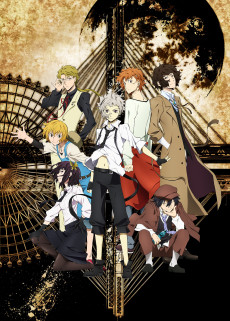 ANIME ActionBungou Stray Dogs
ANIME ActionBungou Stray Dogs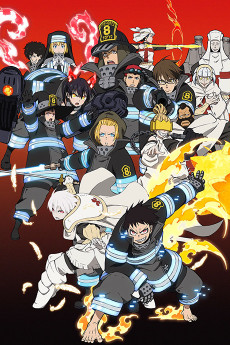 ANIME ActionEnen no Shouboutai
ANIME ActionEnen no Shouboutai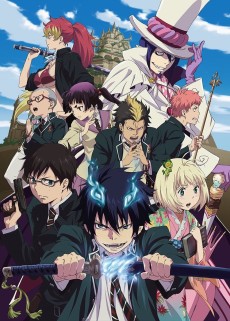 ANIME ActionAo no Exorcist
ANIME ActionAo no Exorcist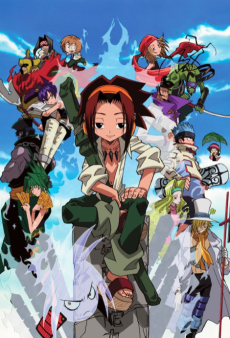 ANIME ActionShaman King
ANIME ActionShaman King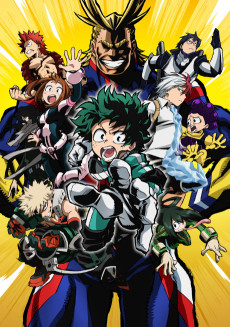 ANIME ActionBoku no Hero Academia
ANIME ActionBoku no Hero Academia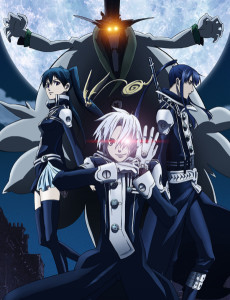 ANIME ActionD.Gray-man
ANIME ActionD.Gray-man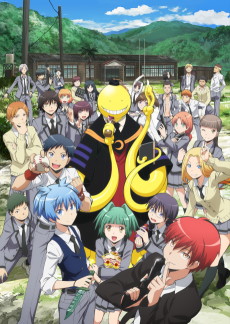 ANIME ActionAnsatsu Kyoushitsu
ANIME ActionAnsatsu Kyoushitsu
SCORE
- (3.85/5)
MORE INFO
Ended inMarch 30, 2009
Main Studio bones
Trending Level 7
Favorited by 10,117 Users

